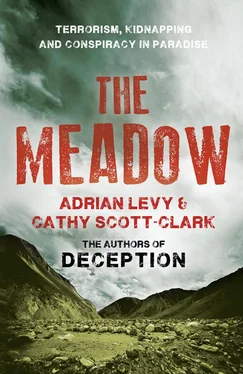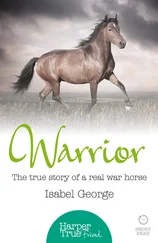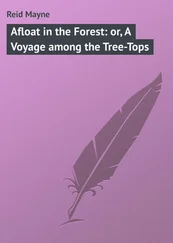‘The Tiger’ (Basir Ahmad Wagay) – Alpha’s field commander, based in Lovloo, above Anantnag
ABBREVIATIONS Abbreviations Prologue 1. Packing 2. A Father’s Woes 3. The Meadow 4. Home 5. Kidnap 6. The Night Callers 7. Up and Down 8. Hunting Dogs 9. Deadline 10. Tikoo on the Line 11. Winning the War, Call by Call 12. The Golden Swan 13. Resolution Through Dialogue 14. Ordinary People 15. The Squad 16. The Game 17. The Goldfish Bowl 18. Chor-Chor Mausere Bhai (All Thieves are Cousins) 19. Hunting Bears 20. The Circus Epilogue: Fill Your Arms with Lightning Picture Section Acknowledgements A Note on Sources About the Authors Praise By the Same Authors Copyright About the Publisher
AFP – Agence France-Press
BJP – the Bharatiya Janata Party, a conservative Hindu nationalist political party
BSF – Border Security Force, a paramilitary outfit raised by India after its war with Pakistan in 1965 and later employed in Kashmir on counter-insurgency operations
CRPF – Central Reserve Police Force, the paramilitary police inducted into Kashmir to fight the insurgency
DG – Director General of Police. The force’s chief
DIG – Deputy Inspector General of Police
DSP – Deputy Superintendent of Police
HM (Hizbul Mujahideen: ‘the Party of the Holy Warriors’) – a Kashmiri militant outfit, formed in 1989, heavily backed at first by Pakistan
HuA (Harkat ul-Ansar: ‘the Movement for the Victorious’) – a group formed in Pakistan in 1993 by the combination of three jihad fronts, including Harkat ul Mujahideen, to rally insurgents fighting India in Kashmir. Designated as a terrorist organisation by the US in 1997
HuM (Harkat ul-Mujahideen: ‘the Order of Holy Warriors’) – formed in Pakistan in the mid-1980s by Maulana Khalil to fight the Soviets in Afghanistan. The precursor of Harkat ul-Ansar
IB – Intelligence Bureau, Indian domestic intelligence
IG – Inspector General of Police
IPS – Indian Police Service
ISI – Inter Services Intelligence directorate, Pakistan’s military intelligence agency
J&K – Jammu and Kashmir
JKLF – Jammu and Kashmir Liberation Front, formed in Birmingham, UK, in 1977; one of the first militant outfits to mount an armed struggle against India in Kashmir
JKSLF, or SLF – Jammu and Kashmir Students Liberation Front, also known as the Students Liberation Front. Formed in Kashmir in 1987
LoC – Line of Control, the 406-mile-long ‘ceasefire line’ that separates the Indian and Pakistan sections of the divided state of Jammu and Kashmir
POK – Pakistan Occupied Kashmir, as the Indians sometimes refer to the section of the state administered by Islamabad
RAW – Research and Analysis Wing, Indian foreign intelligence
RR – Rashtriya Rifles, an Indian Army force of specialist counter-insurgency troops, formed in 1990 to fight the insurgency in Kashmir
RSS – Rashtriya Swayamsevak Sangh, a Hindu paramilitary movement founded in 1925 to oppose British colonialism
SHRC – State Human Rights Commission, an Indian government body that investigates allegations of human rights abuses
SP – Superintendent of Police
SSP – Senior Superintendent of Police
STF/SOG – police Special Task Force, later renamed the Special Operations Group, founded in 1993 to fight the insurgency in Kashmir
PROLOGUE Prologue 1. Packing 2. A Father’s Woes 3. The Meadow 4. Home 5. Kidnap 6. The Night Callers 7. Up and Down 8. Hunting Dogs 9. Deadline 10. Tikoo on the Line 11. Winning the War, Call by Call 12. The Golden Swan 13. Resolution Through Dialogue 14. Ordinary People 15. The Squad 16. The Game 17. The Goldfish Bowl 18. Chor-Chor Mausere Bhai (All Thieves are Cousins) 19. Hunting Bears 20. The Circus Epilogue: Fill Your Arms with Lightning Picture Section Acknowledgements A Note on Sources About the Authors Praise By the Same Authors Copyright About the Publisher
On 1 May 2011, a Prowler electronic-warfare aircraft, taking off from the USS Carl Vinson , jammed Pakistan’s radar systems, silence spreading like emulsion over the Islamic republic. At fifty-six minutes past midnight on the morning of 2 May, two American stealth Hawks, ferrying a team of US Navy Seals, hovered over a walled compound in the spick-and-span garrison town of Abbottabad, seventy-two miles north of Islamabad, the Pakistani capital.
Over the next few minutes, Operation Neptune Spear came to a head, achieving, with only a dozen shots fired, what John Brennan, President Obama’s chief counter-terrorism advisor would call the ‘defining moment’ in the war against terrorism.
Winkled out of his hiding place by cruising satellites capable of measuring the length of a man’s shadow from six hundred miles up, while down on the ground a medical-aid camp established to counter polio in Abbottabad had been subverted to sniff out residents’ DNA, the elusive Osama bin Laden had finally been tracked down, a decade after 9/11. As he reached across his bed for his AK-47 he was shot dead, ‘decapitating the head of the snake that is al Qaeda’, according to Brennan.
One chapter in a story of our times had come to an end.
Sixteen years earlier, in the heights of the Indian Himalayas, where the mountains gather in a half-hitch to encompass the troubled valley of Kashmir, a crime was committed whose nature and cruelty presaged the age of terror Osama would go on to marshal.
In July 1995, high in the mountains of Kashmir, six Western trekkers – two Britons, two Americans, a German and a Norwegian – were seized by a group of Islamic guerrillas who demanded the release of twenty-one named militants imprisoned in Indian jails in exchange for their lives. At the head of the list was Masood Azhar, a portly cleric from Pakistan.
Masood Azhar’s early career mirrored that of Osama. Growing up in Pakistan’s eastern Punjab province in the seventies and eighties, Masood, the spoiled favourite son of a wealthy landowner, had lacked for nothing – much like the privileged young Osama, whose well-connected family made its fortune constructing palaces for Saudi royals. Educated in an Islamist hothouse in the frenetic port city of Karachi, in Pakistan’s deep south, Masood graduated to become the mouthpiece for a guerrilla outfit that would, like Osama, gravitate to Afghanistan to fight the occupying Soviet Red Army to a standstill.
When Moscow retreated from Kabul in 1989, Masood and his unemployed fighters had converged on northern Africa, looking for new causes. They found Osama there too, well before ‘the Sheikh’ had been flagged up on Western watchlists. Together, Masood, a stubby firebrand, whose hypnotic patter had already propelled thousands into battle, and Osama, the lean and pensive fugitive whose deep war chest had bought matériel and men, began to direct Afghanistan veterans in a new fight against the West.
They struck first in broken Somalia in 1993, where America was bogged down in a peacekeeping mission, Masood and Osama arming Islamists with rocket-propelled grenades that brought down two US Black Hawks in the battle for Mogadishu, leaving nineteen American soldiers dead and seventy-three wounded in a bloody débâcle. Masood was soon travelling again, this time to Britain, where he raised more funds and recruited jihadi sleepers who would wait the best part of a decade before attaining notoriety in both the West and the East.
However, in 1994, while Osama was consolidating his front in Sudan and Yemen, buying a commercial airliner and shipping weapons and gold around the world, Masood became temporarily unstuck while sowing the seeds of insurrection in Kashmir. Slipping into India on false papers, hoping to galvanise a flagging local Muslim insurgency, he was captured by the Indian Army. It was this event that led to the kidnappings of July 1995.
Читать дальше











